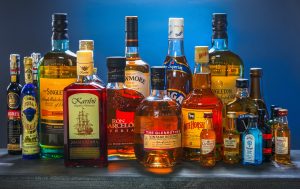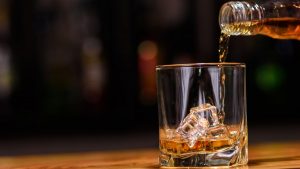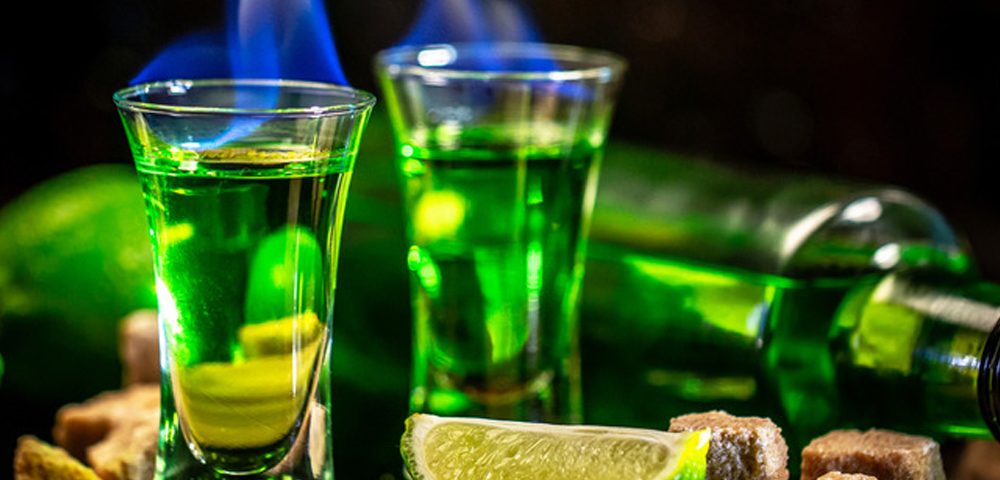People have been taking alcohol for hundreds of years, and there have been different variations of it since. Alcohol is a hallucinatory drug and a chemical. Secondary alcohols, which are the types we use daily, are formed when alcohols combine with other atoms. They include ethanol, isopropanol, and methanol.
The kind we can safely drink is known as ethanol. The other two kinds are used for manufacturing and cleaning, not drinking. Methanol is used in the fuel for boats and cars and also in the manufacture of windshield wiper fluid, paint remover, and antifreeze. Isopropyl alcohol or Isopropanol is more commonly known as rubbing alcohol which is used for disinfection and cleaning. Isopropanol and methanol are both lethal to man because our bodies break them down into harmful substances that cause liver failure. If you take even the smallest amount of rubbing alcohol or methanol, it can be fatal.
What humans drink is known as ethyl alcohol or ethanol and it is produced when you ferment starches, sugars, or yeast. People have taken ethanol-based beverages like wine or beer for centuries to alter their moods. Nevertheless, ethanol also has deadly results on your body. The liver can break down ethanol but in restricted amounts, as it is toxic and can damage the brain, liver, and other body organs with time. It also depresses your central nervous system, diminishing your judgment and coordination. Furthermore, some forms of alcohol abuse, such as binge drinking can lead to alcohol addiction or alcoholism.
Categories of Alcoholic Beverages
 Alcoholic drinks are grouped into two categories: undistilled and distilled. Undistilled alcoholic drinks are fermented drinks made through the process of fermentation. Fermentation is the chemical process through which yeast or bacteria changes sugar into ethanol. Beer and wine fall into this category. Breweries ferment grains like wheat and barley to form beer, and wineries ferment different types of grapes to produce wine.
Alcoholic drinks are grouped into two categories: undistilled and distilled. Undistilled alcoholic drinks are fermented drinks made through the process of fermentation. Fermentation is the chemical process through which yeast or bacteria changes sugar into ethanol. Beer and wine fall into this category. Breweries ferment grains like wheat and barley to form beer, and wineries ferment different types of grapes to produce wine.
Distillation is usually done after fermentation, and it is the process of changing a fermented substance into another with a higher concentration of alcohol. Distilling an alcoholic drink concentrates it further by isolating the components of the fermented substance from the alcohol. Spirits and liquors fall into the distilled alcoholic beverages category, and they have more alcohol by volume (ABV) compared to fermented drinks. Distilled alcoholic drinks usually also have a higher alcohol proof.
Alcohol proof and alcohol by volume or ABV are different evaluations of the alcohol concentration or content in a drink. ABV is the number of ml of ethanol in every 100 ml of an alcoholic solution. Alcohol proof is double the percentage of an alcoholic drink’s alcohol by volume. A drink with 50 percent ABV, for example, has an alcohol proof of 100. The higher the alcohol proof or alcohol by volume, the higher the alcohol concentration, and the stronger an alcoholic drink is.
Most alcoholic drinks usually have a low ABV of about eight to 25 percent and go as high as 40 percent maximum. It is rare to find alcohol with an ABV of above 40 percent, in most pubs or bars unless someone asks for a stronger drink to be brought in, maybe from another area of the world. Some countries usually set up restrictions for the highest ABV for alcoholic drinks sold in their regions. Although, for people suffering from alcohol abuse problems, it is not uncommon for them to partake in alcoholic drinks with an ABV of even 96%.
Distillers around the world usually strengthen the alcohol content of some whiskeys, absinthes, vodkas, and rums to produce more appealing and high-proof drinks. Some vodkas have an average ABV of 80 to 100 proof, but certain specialty liquors even have an ABV of 98 percent or 196 proof. For such high-proof alcohols, it is best to dilute or mix them with other beverages as they are not meant for sipping.
Categorizing Alcohols by Alcohol Content
Various types of alcoholic drinks have a higher alcohol content than others, and those with higher ABVs can cause alcohol poisoning and drunkenness faster, even in small quantities.
Distilled Alcoholic Drinks (Spirits and Liquors)
- Everclear is a grain-based drink with a high alcohol content of about 60 to even 95
 percent ABV.
percent ABV. - Absinthe is also a spirit produced from various herbs and leaves. Some kinds of absinthe have an ABV of roughly 40 percent, while some have a maximum of 90 percent ABV.
- Vodka is a liquor typically produced from potatoes and fermented grains with a typical ABV of about 35 to 95 percent.
- Tequila is also a liquor whose main ingredient is the Mexican blue agave plant and has an ABV of about 40 to 50 percent.
- Rum is an alcohol made using fermented and distilled sugarcane juice or molasses. It has an ABV of 40 to 50 percent ABV, but overproof rum has a minimum alcohol concentration or ABV of 57.5 percent. A majority of overproof rum goes over the minimum ABV with an alcohol concentration of up to 75.5% or 151 proof.
- Whiskey is produced by fermenting grains such as corn, rye, barley, and wheat. It has an ABV of 40 to 53.3 percent.
- Brandy is made by distilling wine, and it has an ABV of 35 to 60 percent.
- Gin is another spirit produced by distilling Juniper berries, and it usually has an ABV of roughly 35 to 55 percent ABV. Unlike other spirits, you are not meant to serve gin as is, but instead, combine it with juices and mixers.
Undistilled Alcohol
 Beer is one of the most popular and oldest alcoholic drinks in history and it has an ABV of 4 to 6 percent. Some beers do have a lower or higher alcohol content with light beers ranging from 2 to 4 percent and malt liquors ranging from 6 to 8 percent.
Beer is one of the most popular and oldest alcoholic drinks in history and it has an ABV of 4 to 6 percent. Some beers do have a lower or higher alcohol content with light beers ranging from 2 to 4 percent and malt liquors ranging from 6 to 8 percent.- Wine is also quite old and popular. Typical wine has an ABV of 14 percent or less. Sparkling wine, commonly known as champagne, has an ABV of 10 to 12%, while some fortified wines usually have an ABV of roughly 20 %. Fortified wines are those strengthened using distilled alcohol.
- Sake is a notable Japanese drink produced by fermenting rice. It has an alcohol content of approximately 16 percent ABV.
- Hard cider or fermented apple juice has an ABV of roughly 5 percent.
- Mead has an alcohol concentration of 10 to 14%, and it is produced by combining water and fermented honey.
Distilled alcohol is stronger than undistilled or fermented alcohol hence why they have such high alcohol by volume percentages. Distilled alcohol or spirits and liquors are produced when fermented substances go through distillation, which makes them more potent and stronger. Some distilled alcohol can go through several rounds of distillation to make them even stronger and purer by increasing their alcohol content. All hard liquor or spirits have a high alcohol content which ranges from 20 to 65 percent. Based on the average ABV ranges of distilled alcoholic drinks, vodka seems to be the strongest by comparison. It can have an alcohol concentration of as high as 95 percent, and you only need to take a small quantity to become drunk.
Regardless, any alcoholic drink can result in an alcohol use disorder, so it is important to know the alcohol content of what beverage you are taking every time you drink. This will help you pace yourself and prevent you from problem drinking or alcoholism.
